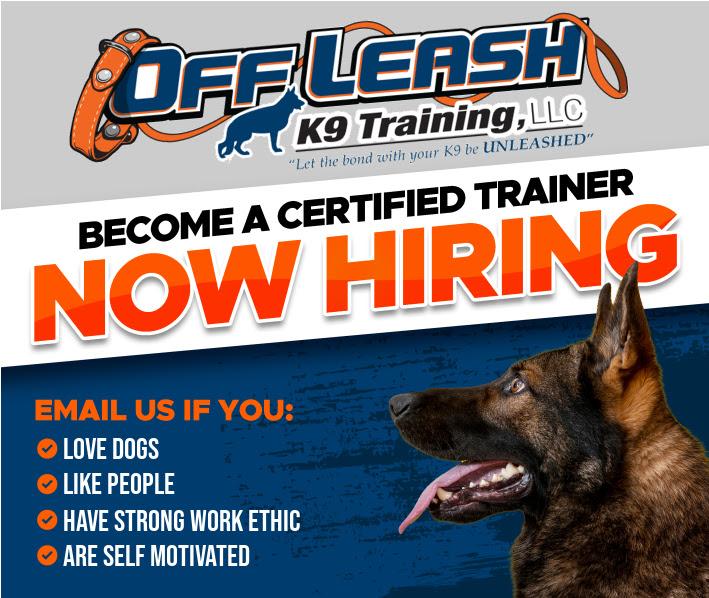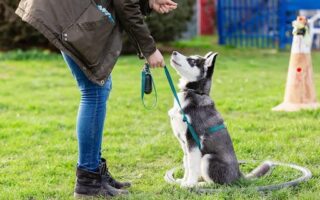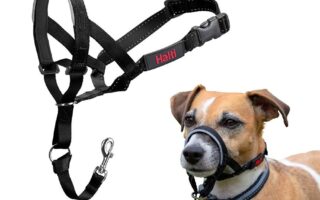The Freedom to Explore: Embracing Off-Leash K9 Adventures
In a world where canine companions have transcended the role of mere pets to become cherished family members, the concept of off-leash exploration offers a unique avenue for both dogs and their humans to connect more profoundly with nature and each other. The ‘off-leash K9’ movement champions this bond, encouraging owners to let their dogs experience the liberation of roaming freely, fostering innate instincts and enhancing social behaviors. As parks and open spaces beckon with the promise of unbounded adventures, the benefits of off-leash training and responsible ownership become increasingly apparent. Join us as we delve into the nuances of off-leash dog experiences, exploring the methodologies, benefits, and considerations that accompany this liberating practice. In doing so, we reveal not just the joy it brings to our furry friends, but the powerful connections it nurtures within our lives.
Table of Contents
- The Joy of Freedom Unleashed: Understanding Off-Leash Training Benefits
- Essential Commands for Off-Leash Success: Building a Strong Foundation
- Navigating Challenges in Off-Leash Environments: Tips for a Smooth Experience
- Creating Safe Spaces for Exploration: Recommendations for Off-Leash Areas
- Q&A
- Future Outlook
The Joy of Freedom Unleashed: Understanding Off-Leash Training Benefits
Embracing the art of off-leash training not only enhances the bond between you and your canine companion but also opens up a world of possibilities for shared adventures. Imagine a day when your dog can roam freely in a secure environment, exploring nature’s wonders without the constraints of a leash. This environment encourages natural behaviors such as running, fetching, and even swimming, allowing your furry friend to express themselves fully.
- Increased Freedom: Off-leash training allows dogs to enjoy a sense of autonomy while still being under your guidance.
- Enhanced Communication: Effective off-leash training fosters a stronger line of communication, making it easier for you to convey commands and for your dog to respond.
- Improved Physical Health: More freedom to run and play leads to better physical conditioning, reducing the risk of obesity and related health issues.
- Mental Stimulation: Off-leash excursions engage a dog’s brain, allowing them to explore scents and sights that they wouldn’t encounter while leashed.
Off-leash training is not without its considerations, and the benefits shine brightest when approached with proper techniques and precautions. To illustrate, consider the following essential elements that contribute to a well-trained off-leash dog:
| Element | Description |
|---|---|
| Recall Training | Your dog should reliably return to you on command, ensuring their safety and allowing for enjoyable experiences. |
| Socialization | Frequent interactions with other dogs and people help to foster a well-adjusted canine. |
| Positive Reinforcement | Using treats and praise to reward desired behaviors reinforces good habits during off-leash adventures. |
| Environment Awareness | Teaching your dog to be aware of their surroundings promotes safety and appropriate behavior in various settings. |
Essential Commands for Off-Leash Success: Building a Strong Foundation
To ensure your dog thrives off-leash, mastering a set of essential commands is crucial. These commands not only encourage *positive behavior* but also foster a stronger bond between you and your furry friend. Focus on these core commands for a solid foundation:
- Recall: Teach your dog to come back to you promptly, regardless of distractions.
- Leave it: A vital skill for managing curiosity, this command helps keep your dog safe.
- Stay: This command instills discipline, allowing your dog to remain in place until released.
- Heel: It promotes walking beside you, ensuring your dog is focused and engaged.
- Wait: An important command for helping your dog understand patience, especially at crossings or doorways.
Incorporating *positive reinforcement* tactics while training will enhance your dog’s learning experience. Here’s a simple table illustrating effective rewards for each command:
| Command | Effective Rewards |
|---|---|
| Recall | Praise, treats, playtime |
| Leave it | Toys, attention |
| Stay | Calm praise, treats |
| Heel | Verbal praise, treats |
| Wait | Sustained affection, treats |
Navigating Challenges in Off-Leash Environments: Tips for a Smooth Experience
When venturing into off-leash environments, preparation is key to ensuring a positive experience for both you and your canine companion. Start by assessing the environment before letting your dog roam free. Make sure to factor in the following elements:
- Distractions: Be aware of potential stimuli such as other dogs, wildlife, or noise that could catch your dog’s attention.
- Safety: Look out for hazards like sharp objects, toxic plants, or areas near roadways where your dog can wander too close to danger.
- Size of the area: Ensure the space is sufficiently large, enclosed, and appropriate for off-leash activity to prevent escapes.
Communication is essential in off-leash settings, enabling you to maintain control even as your dog explores. Implement the following techniques to enhance engagement and management:
- Consistent recall commands: Train your dog to respond to commands like ”come” or “here,” rewarding them when they comply to reinforce this behavior.
- Body language: Use visual cues and confident body language to communicate your expectations to your dog without overwhelmed verbal commands.
- Engagement techniques: Employ toys or treats to redirect your dog’s focus if they become distracted by surrounding stimuli.
Creating Safe Spaces for Exploration: Recommendations for Off-Leash Areas
Creating off-leash areas that prioritize safety while providing ample opportunities for exploration is essential for both dogs and their owners. Here are some strategic recommendations to help cultivate these spaces effectively:
- Secure Fencing: Ensure the area is surrounded by high, sturdy fences to prevent escapes.
- Clear Signage: Install signs indicating the rules of the area, such as leash requirements for entering and exiting.
- Regular Maintenance: Keep the area well-maintained by regularly checking for hazards like sharp objects or toxic plants.
- Divided Zones: Consider creating separate zones for large and small dogs to minimize intimidating encounters.
- Access to Water: Include water stations or natural water sources so dogs stay hydrated during play.
Additionally, implementing community-driven guidelines fosters a sense of shared responsibility among dog owners. A simple checklist can help enhance the experience for all visitors:
| Guidelines | Status |
|---|---|
| Dogs are up to date on vaccinations | ✔️ |
| Owners clean up after their pets | ✔️ |
| Unruly behavior is addressed immediately | ✔️ |
| Dogs are not aggressive towards others | ✔️ |
Q&A
Q&A: Understanding Off Leash K9 Training
Q1: What is Off Leash K9 training?
A: Off Leash K9 training is a specialized dog training program that focuses on teaching dogs to obey commands without the need for a leash. This approach enhances the bond between the dog and owner while promoting a greater sense of freedom and confidence in the dog.
Q2: Who can benefit from Off Leash K9 training?
A: Off Leash K9 training can benefit dog owners of all experience levels, from first-time pet parents to seasoned trainers. Dogs of various breeds and ages can also participate, provided they are healthy and receptive to training.
Q3: What commands do dogs typically learn in Off Leash K9 training?
A: Dogs learn a range of commands, including basic obedience (sit, stay, come), as well as more advanced commands such as heel and place. The goal is to create reliable responses without a leash, giving dogs the freedom to explore while remaining safe and controlled.
Q4: Is Off Leash K9 training safe for all dogs?
A: While many dogs can thrive in Off Leash K9 training, safety is paramount. It’s essential for dogs to have a solid foundation of obedience training prior to going off-leash. Additionally, dogs should be assessed for temperament and behavior to determine if they are suited for this style of training.
Q5: What tools or techniques are used during Off Leash K9 training?
A: Trainers often use positive reinforcement techniques, including treats, praise, and play. Many programs incorporate e-collars as tools to give cues from a distance, which can help effectively communicate commands to the dog without a physical leash.
Q6: How long does it typically take for a dog to graduate from Off Leash K9 training?
A: The duration of training varies based on the dog’s age, behavior, and previous training experience. Many Off Leash K9 programs last anywhere from a few weeks to several months, with consistent practice reinforcing behaviors long after training has concluded.
Q7: Can Off Leash K9 training help with behavioral issues?
A: Yes, Off Leash K9 training can assist in addressing certain behavioral issues, such as excessive barking, pulling on the leash, and poor recall. The training emphasizes consistency and control, which can lead to improved behavior in various situations.
Q8: What are the long-term benefits of Off Leash K9 training?
A: Beyond enhanced obedience, the long-term benefits include a stronger owner-dog relationship, increased mental stimulation for the dog, and the opportunity for greater socialization. Dogs trained off-leash often enjoy an enriched life full of adventures, allowing them to thrive both physically and mentally.
Q9: How can interested owners find certified Off Leash K9 trainers?
A: Owners can search for certified trainers through reputable dog training organizations or websites. Recommendations from fellow dog owners, local veterinarian offices, or animal shelters may also lead to qualified Off Leash K9 trainers in the area.
Q10: What should dog owners consider before entering their dogs into Off Leash K9 training?
A: Owners should evaluate their dog’s current obedience level, health, and temperament. Open communication with potential trainers about goals and expectations is also crucial to ensuring a successful training experience for both the dog and the owner.
In Conclusion:
Off Leash K9 training offers a unique opportunity for dogs to gain independence while ensuring their safety and responsiveness in various environments. With the right approach and commitment, both dogs and their owners can enjoy a remarkable journey of trust and companionship.
Future Outlook
As we conclude our exploration of Off Leash K9 Training, it’s clear that the rewards of this approach extend far beyond the simple act of allowing a dog to roam freely. It fosters a deeper bond between owner and pet, enhances communication, and unleashes the full potential of our canine companions. While embracing the joys of off-leash experiences, it’s essential to approach training with patience, consistency, and a profound respect for safety and the well-being of both the dog and the surrounding environment. Whether you decide to embark on this journey or prefer to keep your furry friend leashed, the ultimate goal is a happy, well-adjusted dog and a joyful relationship that enhances both your lives. Now, take a moment to reflect on what you envision for your canine buddy’s adventures and consider how you might harness the principles of Off Leash K9 for a more fulfilling experience together. Happy training!



